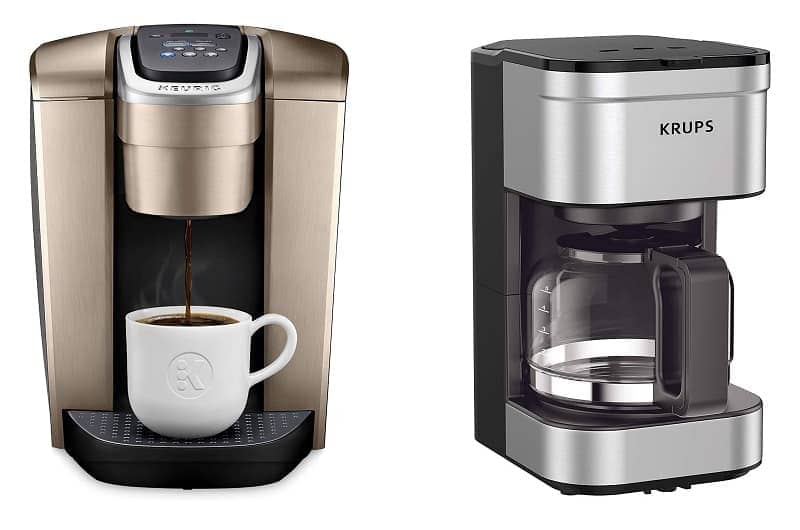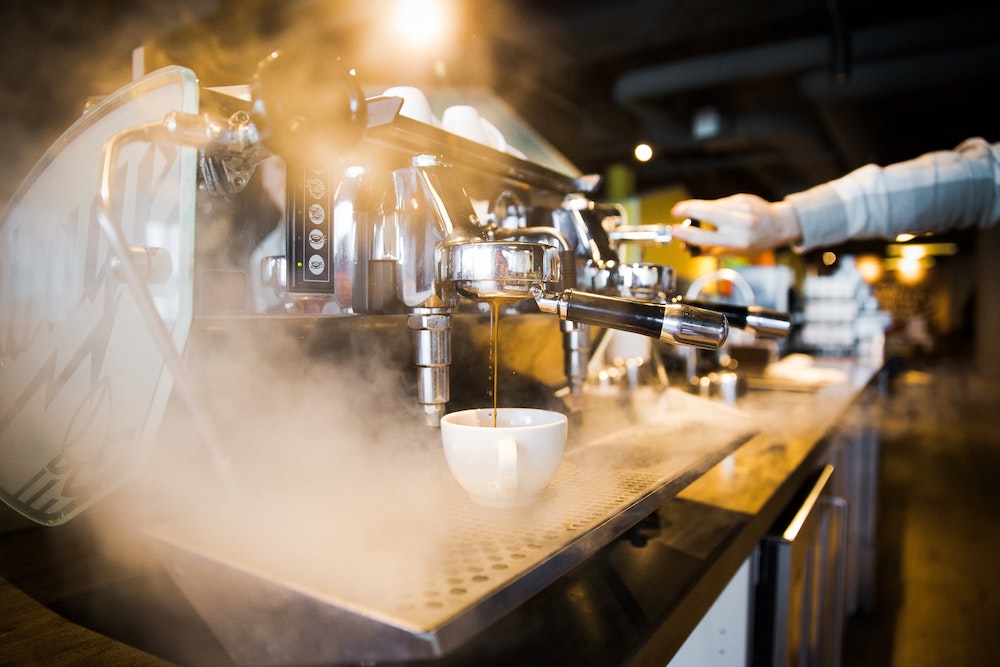
Espresso: it is delicious, wonderfully complex, and highly caffeinated… It is also a fairly expensive form of coffee if you head to your local coffee shop every morning. More and more espresso lovers are turning to homemade espresso given its lower cost, its higher degree of control, and often the ease of preparing it.
But if you’ve done any research on home espresso machines, you may have quickly found yourself overwhelmed by the number of available machines. To help you better understand the different kinds of options you have when it comes to homemade espresso, we’re breaking down and discussing 15 different types of espresso machines including some pros and cons to help you choose the one that suits your needs the best. Grab a cup of your favorite espresso beverage, and let’s get to learning!

Understanding Espresso Machines
Before we dive into the different types of espresso machines, it’s worth reviewing how espresso machines work at a fundamental level so that you can better understand how the machines differ and what it mean for the final product.
Espresso is made by forcing boiling water, near-boiling water, or steam through very finely ground coffee beans. Making espresso is really as simple as causing a very hot liquid or steam to come in contact with this fine coffee powder.
Many espresso machines also have steaming wands that are used to steam milk for mixed drinks like lattes and cappuccinos. Because water must be heated up to a far hotter temperature for steam than for brewing espresso, there are a variety of different heating methods in espresso machines, which you’ll notice below.
Now that you know how espresso machines work, let’s take a look at the different kinds of machines that are available, as well as some pros and cons of each.
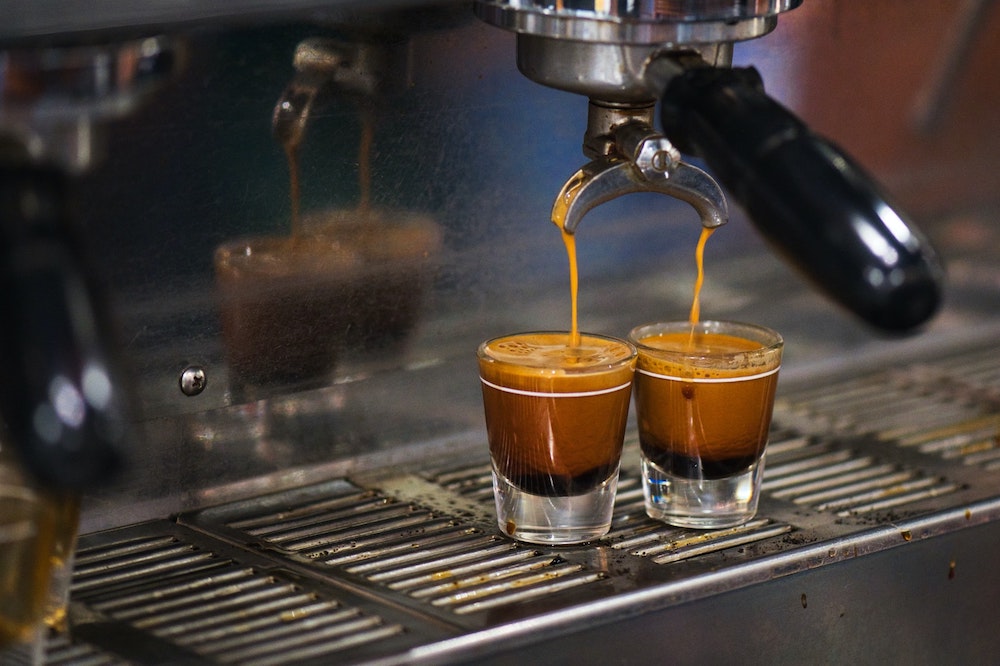
What are the types of espresso machines? There are 15 varieties, including differences in water flow (reservoir, direct connect, and volumetric espresso machines) and differences in boilers (single boiler, double boiler, and heat exchanging espresso machines). There are also differences in mechanism (lever, steam-driven, and pump-driven espresso machines), and levels of automatic operation (semi-automatic, automatic, super-automatic, ultra-automatic espresso machines). Finally, you have pod espresso machines and stovetop espresso machines.
Whew! Let’s learn more about these varied options:

The 15 Types of Espresso Machines
1. Direct Connect or Plumbed-In Espresso Machines
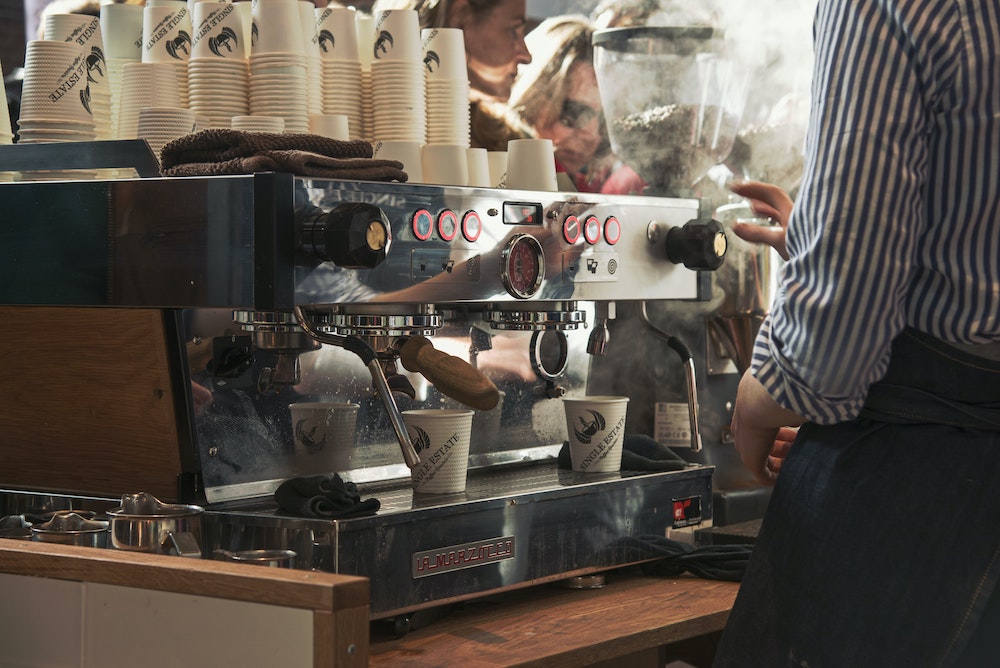
One of the most popular types of espresso machines is the direct connect or plumbed-in machine. Common in coffee shops, this type has a dedicated water line running to it for water supply. These machines have an infinite supply of water just like your faucets would, so there is never a need to refill a water tank or worry that you may be running your machine without water, which can be damaging. They will require professional installation and cannot be relocated without having a plumber in to cap the water supply line.
These machines are best if you make a lot of espresso and have the time and money to spend on having it installed properly.
- Endless supply of water
- No need to worry about damaging your machine
- Great for large volumes of espresso
- Requires a dedicated plumbing line
- Requires professional installation
- Costly to install
- Cannot be relocated easily
2. Reservoir or Pour Over Espresso Machines
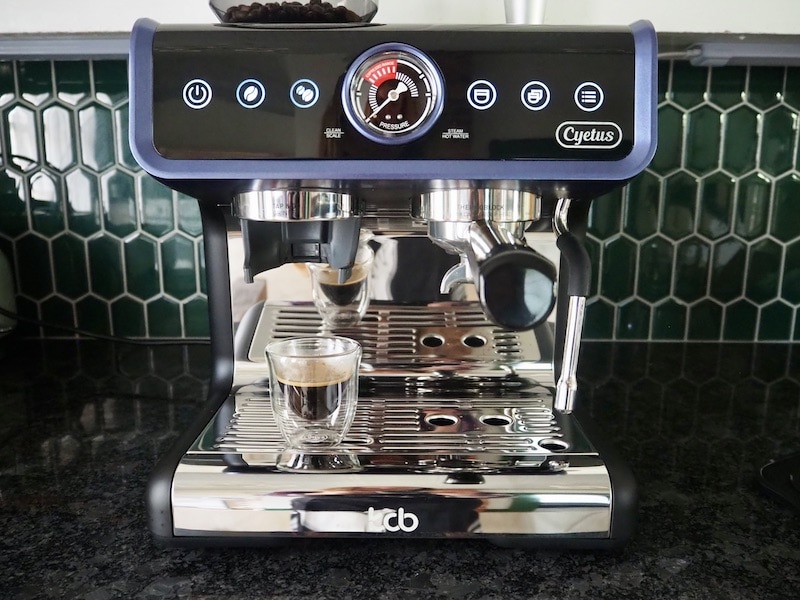
In contrast to the professional direct connect espresso model, reservoir espresso machines are much more common in homes. This kind of machine has a reservoir that holds a limited amount of water that can be used to make espresso, so you’ll need to refill the reservoir when it’s close to running out. This can be a bit of a nuisance if you use it often, but it also means you won’t need a dedicated water line to supply your machine.
This machine is best for espresso lovers who may want to relocate their machine, as well as those who don’t want to have a plumbing line installed just to make espresso. If typically only make a few shots of espresso per day, the reservoir model will likely work well for you.
- Can be easily moved
- No installation required
- Needs to be refilled regularly
- Needs descaling and regular cleaning
3. Volumetric Espresso Machines

Volumetric espresso machines measure water flow from your water reservoir or source and end the brewing process when a specified volume has run through your espresso. The amount of water used, of course, greatly affects the taste of your espresso, so having a machine that measures the water for you allows you to have a foolproof system for consistent, delicious espresso. Most will allow you to alter the volume to personalize your shot, which allows for some customization. You won’t have to rely on an external scale, intuition, or experience to make great espresso with a volumetric machine.
These machines are great for espresso drinkers who care about consistency and like to have coffee each morning that is just as good as it was the day before. They’re also good for those who want to play around with settings to dial in the perfect shot of espresso.
- Makes highly consistent espresso
- Programmable to taste
- No experience required
- May have limited programmability
- Doesn’t take ground size or volume into account
4. Single Boiler Espresso Machines
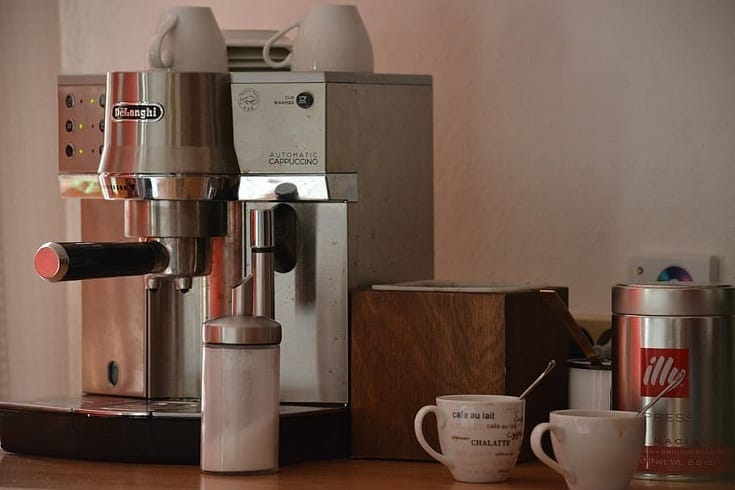
Single-boiler espresso machines are often cheaper than other options because they use a single heating element to heat both the water for brewing and for steaming milk or cream. The water used for espresso is far cooler than the water heated up to boiling to produce steam for steaming milk, so single boiler espresso machines need a cool-down period between shots. These machines are smaller than most others, so while they may not be best for commercial use given their necessary downtime, they’re great for making espresso at home without taking up much counter space.
These machines are great for those who drink single shots of espresso and don’t mind waiting for a second one. They’ll also suit those who want the option to steam milk for mixed coffee drinks.
SEE ALSO: Our Complete Review of the Single-Boiler Diletta Mio Espresso Machine!
- Cheaper than most other options
- Small and compact
- Includes steaming wand for steaming milk
- Requires a cool down between shots
- Not suitable for commercial use
5. Double Boiler Espresso Machines
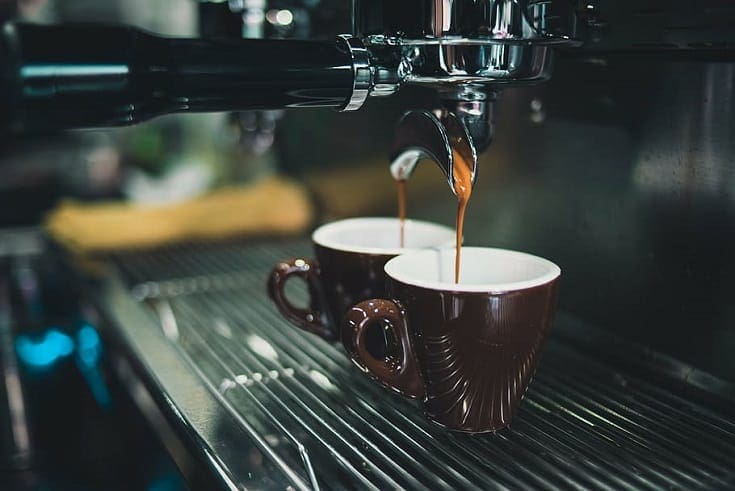
Double boiler espresso machines are similar to single boiler machines but, unsurprisingly, have two heat sources. These machines use one boiler to heat water for making espresso and another to heat water to a boiling temperature for steaming milk. Because of the second boiler, these machines are often bulkier and significantly more expensive than single boiler machines, but they don’t require a cool down period and can provide shot after shot in a short period of time.
These machines are great for commercial use, but they’re also good for families or for espresso lovers who enjoy multiple shots each morning.
- No cool down between shots
- Offers an option for steaming milk
- More expensive than single boiler machines
- Bulky
6. Heat Exchanging Espresso Machines
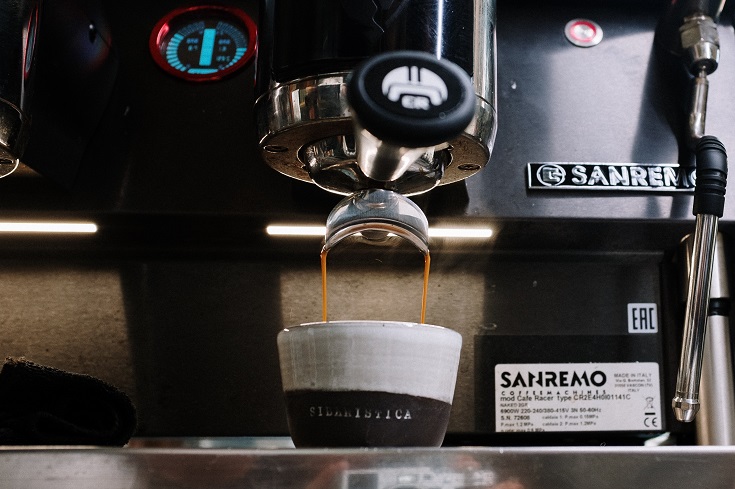
To solve the high price and bulkiness of the double boiler machine but keep the benefits of having two heat sources, heat exchanging espresso machines use a single boiler to get double boiler results. These machines have one boiler to heat water for both brewing coffee and steaming milk, but they use a mechanism to reduce the temperature of the water heated for steaming to a suitable temperature for brewing. The result is a single boiler machine that has little to no cool down at the expense of being less accurate with brewing temperatures.
These machines are great for espresso lovers who put convenience and price over consistency in their shots. If you’re not an espresso connoisseur, having a small, cheap, heat exchanging machine with no cool down between shots is a great option.
- Little to no cool down between shots
- Offers an option for steaming milk
- Cheaper than double boiler options
- Little control over brew temperature
- Produces fairly inconsistent shots
7. Manual or Lever Espresso Machines
https://www.instagram.com/p/B1bbetcl5G4/
Under normal pressure, water will move extremely slowly through espresso grounds, which are very fine, and the time it takes under no pressure is far too long to make a good or even drinkable espresso. To limit the extraction time — the time the water is in contact with the grounds — espresso machines use pressure. Ideally, up to 15 bars of pressure are used to make espresso, and on manual or lever machines, this immense pressure is created by you, the barista. These machines have a lever to make it easy to apply pressure, and with varying amounts of pressure, you’re able to control brew time and water flow, ultimately leading to a highly customizable shot of espresso.
These machines are good for those who want the ability to control every variable involved in their brewing method for the ultimately customizable espresso.
- Allows for high levels of customization
- No pumps or machinery that can fail
- Physically demanding
- Requires experience to get right
8. Steam Driven Espresso Machines
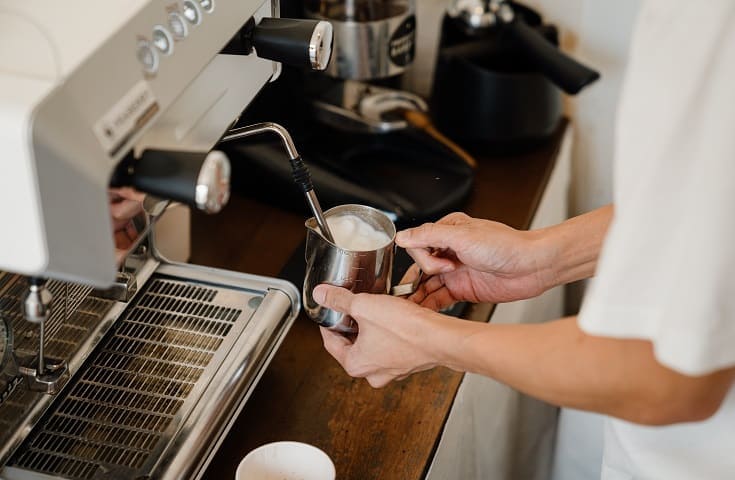
All espresso shots were pulled by hand with a manual or lever machine until steam started being used to build the pressure necessary for making good espresso. These machines heat water to boiling temperatures and allow steam pressure to build up. This pressure is then transferred into the coffee grounds for brewing. These machines are under heavy stress and are often intricate and delicate all at the same time. Quite a bit can go wrong with them, so they do require experience to use properly and safely. They also tend to be very expensive.
These machines are great for those who want the high pressure required to make premium espresso but don’t want to have to exhaust themselves pulling levers to make their coffee.
- Produces high pressure for delicious espresso
- Don’t require physical exertion
- Can be problematic
- Can be difficult to use
- Expensive
9. Pump Driven Espresso Machines

Pump-driven espresso machines are extremely popular now, as they use a simple pump to create the pressure needed to make espresso. These machines skip the physical workout as well as the multitude of potential problems that manual and steam-driven machines can have. Pump espresso machines can be great for consistent shots and can be somewhat customizable. Due to the cost of quality pumps, they’re often more expensive than manual machines.
These machines are great for those who want a consistent shot of espresso and don’t mind giving up some control over how much pressure is used to make it.
- No physical exertion required
- Cheaper than steam driven machines
- Produces consistent espresso
- More costly than manual pumps
- Doesn’t offer much customization
- Costly
10. Semi-Automatic Espresso Machines

Semi-automatic espresso machines also often use a pump to create the pressure required for espresso. These machines usually have an on/off toggle to control water flow through the espresso grounds, so you’ll need to know when to stop the brewing process yourself. You’ll have to watch or measure the flow of espresso and shut off the machine when desired. This does require some experience, but it also allows for some customization in your espresso. These also often include an option for steaming milk.
These machines are perfect for those who want an easy brewing method that includes an option for milk steaming as well as a single, albeit very important, point of customization for brewing espresso.
- Allows for some customization
- Often includes option for steaming milk
- Often no temperature control
- Some experience required for brewing
- Requires attention through brewing process
11. Automatic Espresso Machines
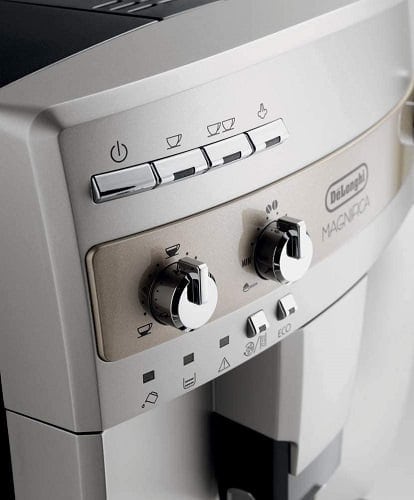
Automatic espresso machines are just like semi-automatic machines, but they shut the water off for you. This means you’ll have little to no control over the temperature as well as less control over brewing time. In exchange for your shot customization, you’ll have a machine that can be set up and left to run without having the need for you to pay attention or know when to cut off the brewing process. In fact, many of these machines can even be set on timers for fresh espresso when you wake up.
These machines are best suited for those who want a fully automatic shot of espresso, like the idea of a set-it-and-forget-it style of brewing, and don’t mind grinding their own espresso or buying pre-ground.
- No experience required
- Simple and automatic brewing process
- Often can be set on timers
- Very little customization for your shot
12. Super-Automatic Espresso Machines
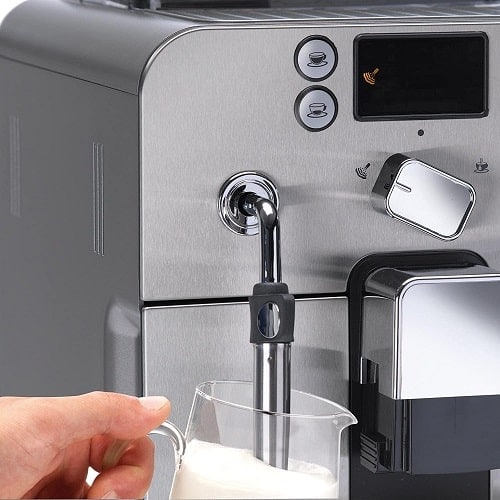
Super-automatic espresso machines go one step further! These machines still have an automatic shut off and can usually be set on timers, but they have the added benefit of grinding your beans for you. This allows for the freshest espresso possible and will increase taste and quality quite a bit. They offer even less customization, as the grinders included in these machines often don’t have very fine grind increments and may not be as consistent as a manual or standalone electric grinder. They are usually fairly expensive, but you cannot beat the convenience!
These machines are perfect for espresso drinkers who don’t want to customize their shot and instead want a fully automatic brew process that can be scheduled. It’s also great for those who want freshly ground beans for the best espresso possible.
- Provides extremely fresh espresso
- Often can be set on timers
- No experience required
- Very little customization
- Often cannot use pre-ground espresso
13. Ultra-Automatic Espresso Machines
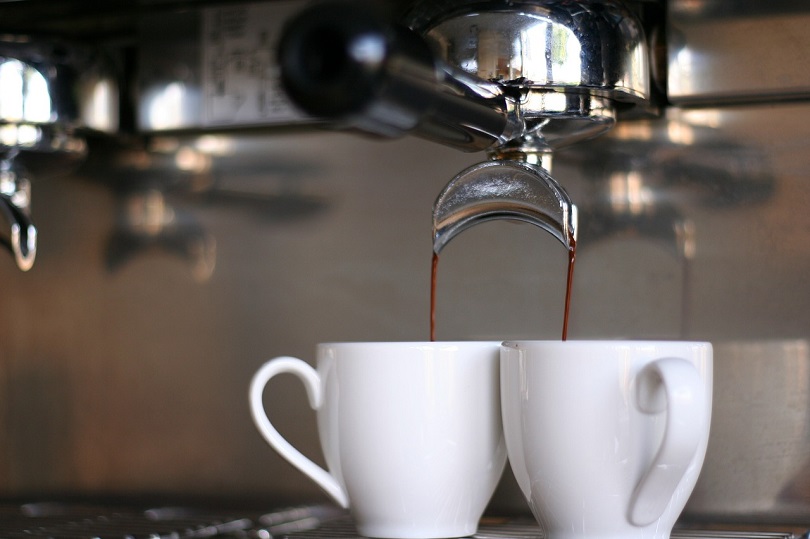
Ultra-automatic espresso machines take everything that super-automatic machines do and add in milk steaming or frothing. These machines allow for a fully automatic brewing process with freshly ground beans, and they have the added benefit of being able to make mixed coffee drinks for you. Imagine waking up to a fresh latte or cappuccino — with an ultra-automatic machine, you don’t need to imagine it! These machines offer virtually no customization and are often extremely expensive.
They are perfect for espresso lovers who want a robotic barista in their home that can be programmed to make fresh espresso or mixed coffee drinks without any input at all.
- Fully automatic barista
- Freshly ground coffee and steamed milk
- Can make mixed coffee drinks
- Can be set on times
- Offers virtually no customization
- Extremely expensive
14. Pod Espresso Machines

With the rise of single-serve coffee makers like Keurig and Nespresso coffee machines, pod-based espresso machines have become fairly popular as well, given their convenience. These machines take small pods filled with espresso grounds and often use a pump to create enough pressure to make a single serving of espresso. Many of these machines don’t include milk steaming options, and those that do are usually more expensive. These are convenient and don’t require you to grind or measure your coffee.
Pod espresso machines are great for those with limited time in the morning who don’t want to worry about grinding or weighing coffee. They’re also good for those looking to save space and want the ability to choose a different flavor of espresso each morning.
- Convenient and simple to use
- Some include milk-steaming options
- Don’t require measurements or weighing
- Small and compact
- Offers no customization
- Pods can get expensive
15. Stovetop Espresso Machines

Stovetop espresso machines, such as the Moka Pot, are simple to use, small and compact, and are likely the cheapest way to start making espresso at home. These normally get filled with water and coffee grounds and are placed on the stove over medium-to-high heat. The stove heats the water up until it boils, and the steam is pushed through the coffee grounds to make espresso. There isn’t much customization here, which means you won’t have much control. However, it also means that this is a simple way to make espresso.
These machines are perfect for those who want a compact way to make espresso that can’t be messed up easily. They’re great for those who don’t have experience with brewing espresso but want to start making it at home.
- Easy to use
- Very cheap
- Doesn’t require much attention during brewing
- Doesn’t offer much customization

Choosing the Right Type of Espresso Machine
Espresso is a complex and highly personal beverage, which translates to countless different ways it can be made and customized. When beginning your research into making espresso at home, the numerous options can easily become overwhelming. So how do you choose between the 15 types of espresso machines?
To find the right espresso maker for you, you’ll need to consider how often you’ll be making espresso, how much you’ll want to make at a time, how much customization you want in your brewing process, and if you would put more importance on being able to dial in the perfect shot or on having a super-convenient machine that can make espresso or mixed coffee drinks at the touch of a button. Whatever kind of espresso drinker you are, there’s a machine out there that suits you and your lifestyle perfectly; now you’ll be able to say with confidence what type of machine that is!
Featured Image Credit: Unsplash
Table of Contents
- Understanding Espresso Machines
- The 15 Types of Espresso Machines
- 1. Direct Connect or Plumbed-In Espresso Machines
- 2. Reservoir or Pour Over Espresso Machines
- 3. Volumetric Espresso Machines
- 4. Single Boiler Espresso Machines
- 5. Double Boiler Espresso Machines
- 6. Heat Exchanging Espresso Machines
- 7. Manual or Lever Espresso Machines
- 8. Steam Driven Espresso Machines
- 9. Pump Driven Espresso Machines
- 10. Semi-Automatic Espresso Machines
- 11. Automatic Espresso Machines
- 12. Super-Automatic Espresso Machines
- 13. Ultra-Automatic Espresso Machines
- 14. Pod Espresso Machines
- 15. Stovetop Espresso Machines
- Choosing the Right Type of Espresso Machine






